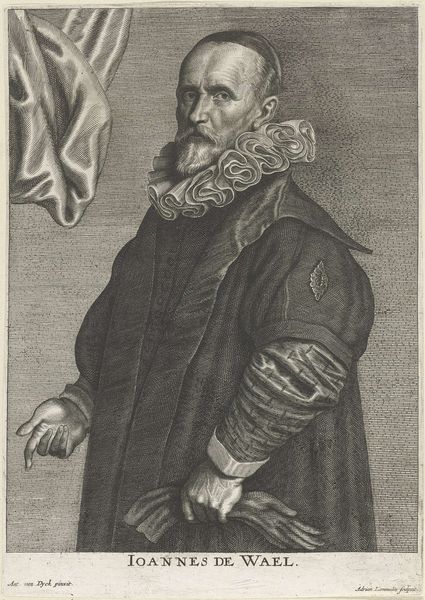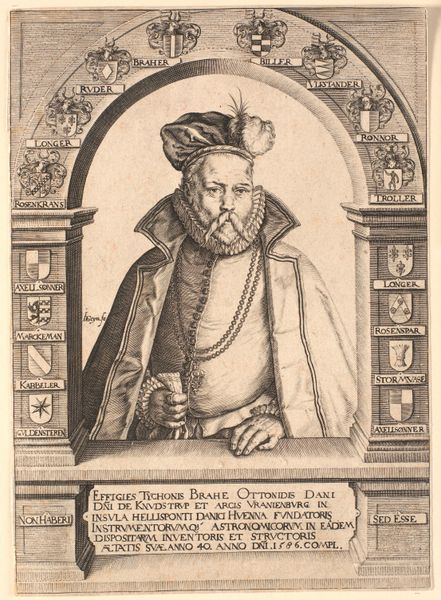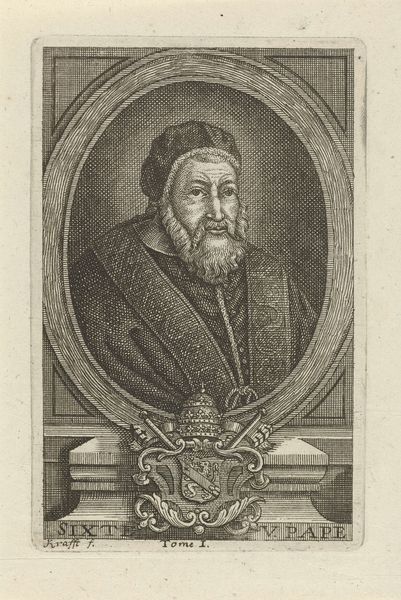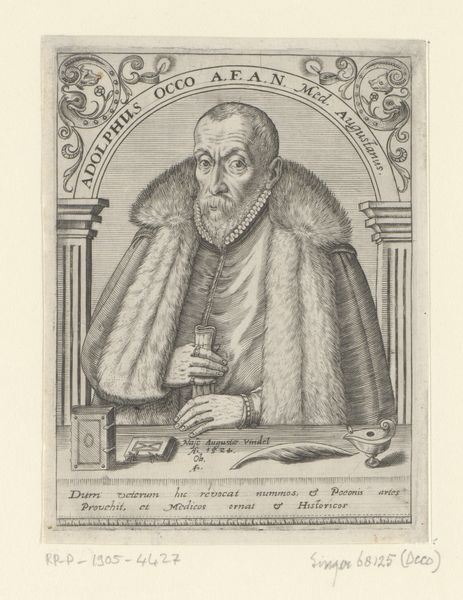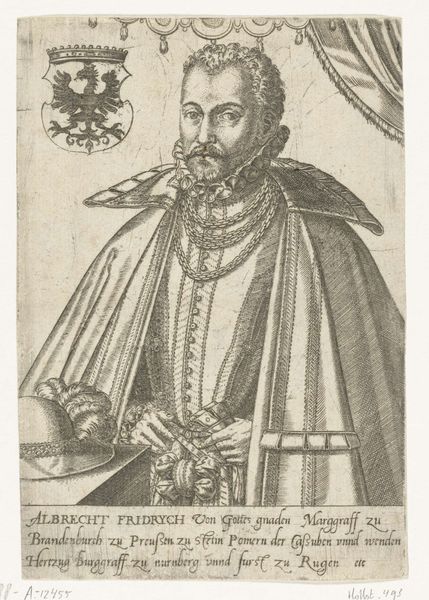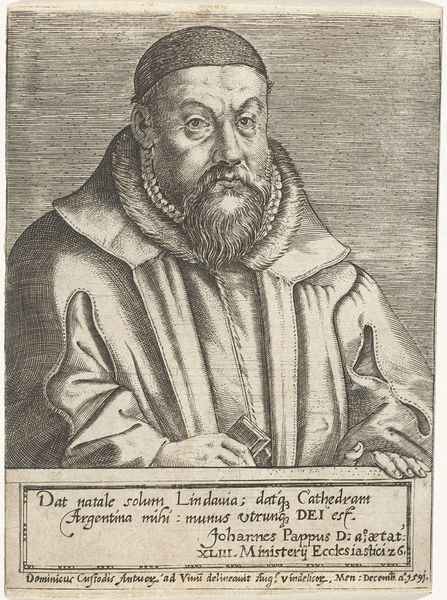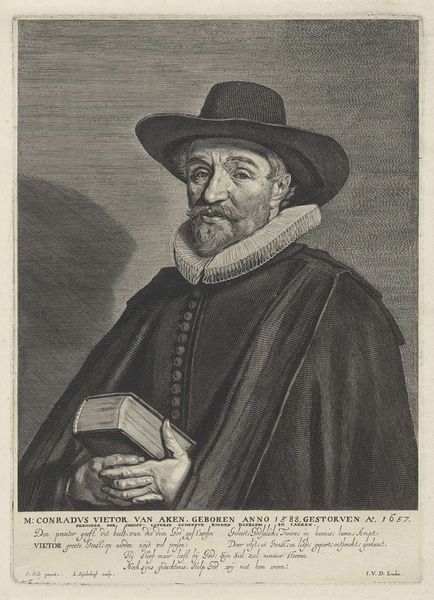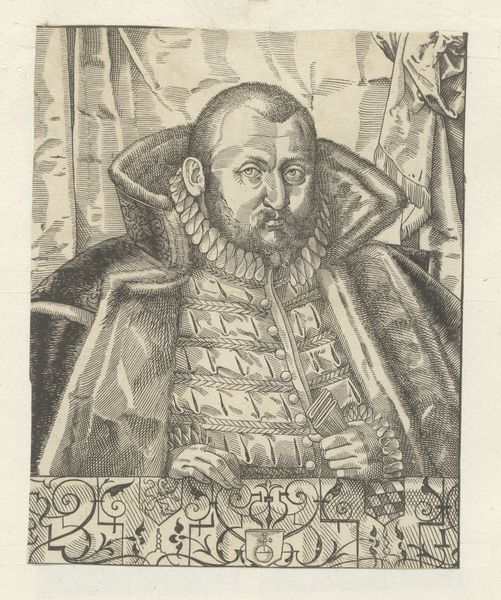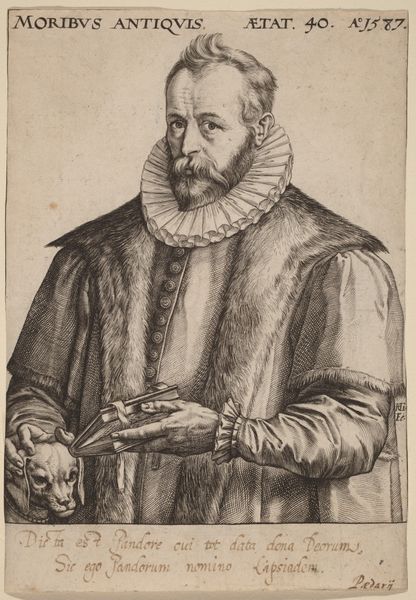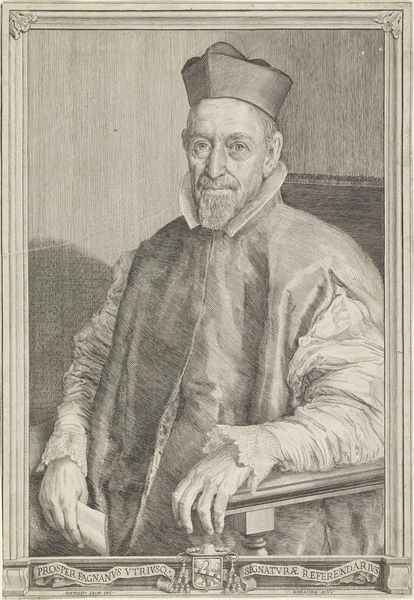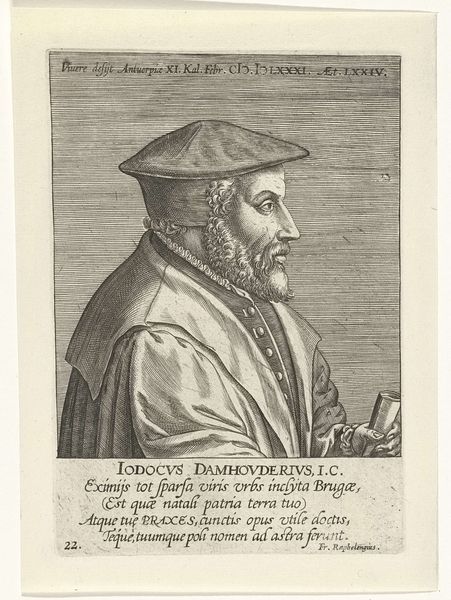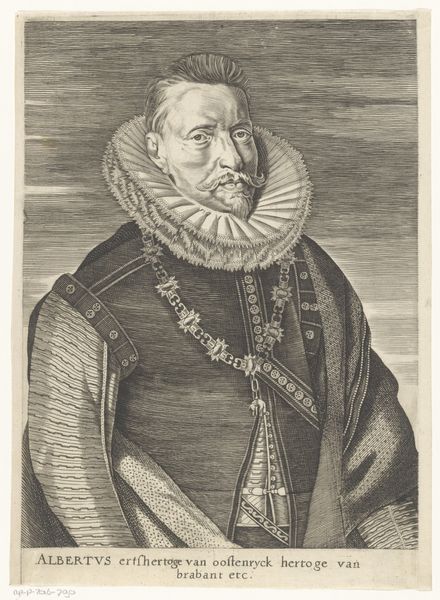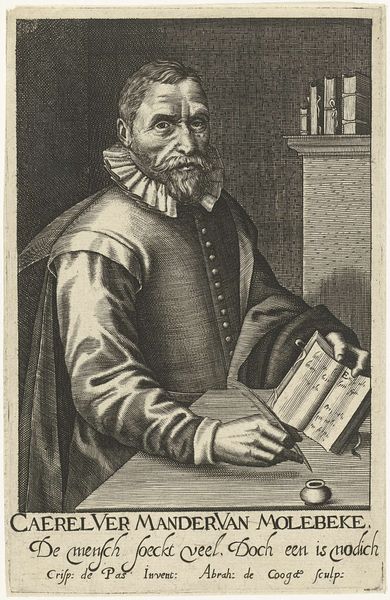
Portret van Frederik II, Koning van Denemarken en Noorwegen 1587 - 1591
0:00
0:00
print, engraving
#
portrait
# print
#
mannerism
#
history-painting
#
northern-renaissance
#
engraving
Dimensions: height 240 mm, width 162 mm
Copyright: Rijks Museum: Open Domain
Editor: Here we have Hendrick Goltzius's "Portret van Frederik II, Koning van Denemarken en Noorwegen," a print dating back to the late 1580s. The detail achieved through engraving is remarkable! The sheer opulence of the King’s attire…it’s quite a statement. What social or political undercurrents might be informing a portrait like this? Curator: An excellent question. This print places Frederick within a very specific visual rhetoric of power. The late 16th century saw a rise in printed portraits as tools of propaganda. Consider how Goltzius, by portraying Frederick in such lavish detail - the fur, the jewels, the ornate doublet - visually reinforces his authority and wealth, projecting an image of a strong and prosperous ruler to both his subjects and rival nations. Who controlled access to the creation and distribution of this print? Editor: That's fascinating. So, it's not just a portrait, but a carefully constructed image meant to project authority. Perhaps the printing press allowed more people than ever before to receive a consistent message about who should rule. Curator: Exactly. Prints had far wider distribution than paintings. The question then becomes: who was the target audience for this print? Elites? Commoners? Both? The answer helps us understand the political function this artwork served. Look closely at the King’s gaze. What kind of relationship does he try to establish with the viewer? Editor: It feels very direct, like he's making eye contact and wants to be taken seriously. Given that it’s an engraving, there are stark delineations of light and shadow, suggesting a desire to control how he is perceived, but not to be gentle about it. It makes me consider who, besides the artist and ruler, influenced its public role and imagery. Curator: Precisely. Analyzing those aspects tells us how art was actively employed within the dynamics of 16th-century power. Editor: I see it now: the piece reveals how even art becomes a political instrument in culture, not just a reflection of it. Thank you!
Comments
No comments
Be the first to comment and join the conversation on the ultimate creative platform.

